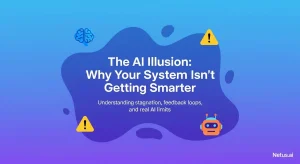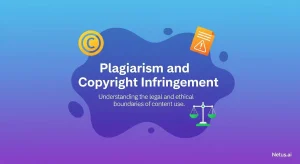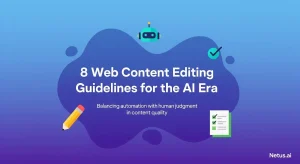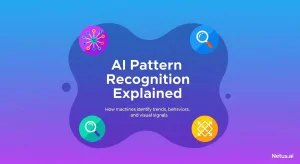Avoid Plagiarism in Marathi Blogs: Expert Strategies and Tips
Ashley Merit
Content writer and editor for Netus.AI
Table of Contents
Avoid Plagiarism in Marathi Blogs. Plagiarism has increasingly become a significant concern in the blogging world. Bloggers need fresh ideas and content to maintain consistency and attract a large audience. Some bloggers may assume it’s challenging to identify plagiarized content and incorporate copied sections in their articles. This can harm their reputation and credibility. Therefore, it is crucial for writers to be aware of plagiarism and take steps to avoid it in Marathi blogs.
The Marathi language, one of India’s scheduled languages, has more than 83 million native speakers. Renowned authors in the Marathi literary world, combined with the growing number and variety of Marathi blogs, have sparked interest in the language and culture. As a blogger, it is crucial to recognize that readers do not want to consume copied content. An instance of plagiarism could negatively impact readership. To prevent this, bloggers should utilize plagiarism checker tools and always create original content.
Key Takeaways
- Plagiarism is a serious issue in blogging which can harm a blogger’s reputation and credibility.
- The growing popularity of Marathi language blogs has led to an increased demand for original content.
- Utilizing plagiarism checker tools and creating unique content can help maintain readership and attract a bigger audience.
Why Does a Blogger Need to Create a Plagiarism-Free Blog?
To establish a strong connection with their readers, a blogger needs to write original content that expresses genuine thoughts and emotions. Using plagiarized material in blog posts can diminish the essence of writing and may fail to attract readers, as it lacks authenticity.
Additionally, plagiarism is an unethical act and can lead to severe consequences upon discovery. When readers lose confidence in a blogger, the readership may decline. Moreover, the original author might consider legal action, such as monetary compensation or imprisonment, in countries with strict copyright laws that protect artistic rights.
From an SEO perspective, plagiarism can negatively affect a blog’s search engine rankings. Search engines like Google often penalize duplicate content, resulting in lower SEO rankings. Consequently, the blog may not appear frequently in search results, which can lead to decreased traffic. Blogs associated with businesses might also suffer from a lack of traffic, impacting their overall performance.
In short, a blogger should prioritize creating plagiarism-free content to:
- Maintain authenticity and connection with readers
- Uphold ethical standards and avoid legal consequences
- Improve search engine rankings and increase visibility
How to Create a Plagiarism-Free Blog?
To establish a plagiarism-free blog, writers must adhere to several guidelines to ensure originality and authenticity in their content. Implementing these tips can significantly enhance the blog’s credibility and prevent any potential plagiarism issues.
- Incorporate unique ideas and opinions: Readers appreciate a writer’s distinctive perspective on a topic. Using well-known facts excessively can diminish the reader’s engagement. Aim for authenticity to captivate your audience and convey new ideas.
- Credit your sources: If you include excerpts from other works to support your argument, always provide proper acknowledgement to avoid plagiarism.
- Use quotation marks and proper citation: When quoting or paraphrasing from another author’s work, utilize quotation marks and cite the source accordingly with relevant information, such as the author, publication date, and publisher.
- Maintain an organized list of sources: Keeping a detailed record of your research sources can help minimize errors and prevent plagiarism. Double-check names and other important details before finalizing your article.
- Cite online articles and provide URLs: Acknowledge online sources by including the URL of the content in your citations, along with publication dates and issue numbers, if applicable.
- Avoid self-plagiarism: When citing your own work, ensure proper citation to prevent self-plagiarism.
- Paraphrase effectively: Paraphrasing allows bloggers to utilize information from researched sources without directly quoting them. Include citations for paraphrased content to maintain transparency.
- Choose and follow a citation style: Adhere to a particular citation style, such as MLA, APA, or Chicago, to maintain consistency and professionalism in your blog.
- Utilize a plagiarism checker: Scan your blog for potential plagiarism before publishing, whether unintentional or intentional, to safeguard your blog’s reputation and avoid negative consequences.
By following these guidelines, writers can achieve a plagiarism-free blog, showcasing their unique ideas, ensuring proper organization and citations, and maintaining their writing’s originality. This diligence will ultimately contribute to increased credibility, readership, and authenticity of their content.
Use Plagiarism Checker to Prevent Plagiarism in Marathi Blogs
Writers should utilize a plagiarism checker to identify any duplicated content in their articles. By uploading their work into a plagiarism checking tool, the writer can ensure originality. These tools, such as Grammarly and Copyscape, use an algorithm to compare the submitted content with existing articles online.
The checker then generates a report displaying the plagiarism percentage, highlighting copied sections and indicating their sources. This allows the writer to revise and create a unique Marathi blog. Employing online plagiarism checkers is essential for maintaining high-quality content.
Frequently Asked Questions
How can I prevent my blog content from being stolen?
To protect your content in Marathi blogs from theft, follow these best practices:
- Use strong and unique passwords for your blog account.
- Regularly update your blog’s software and themes.
- Add a copyright notice at the bottom of your blog.
- Use watermarked images where possible.
- Install security plugins to detect and block content scraping.
Which tools can help identify duplicate content in blog posts?
Some effective tools for detecting duplicate content in blog posts include:
- Copyscape
- Plagscan
- Grammarly Plagiarism Checker
- Quetext
- SmallSEOTools Plagiarism Checker
These tools can help ensure the originality of your Marathi blog posts and avoid plagiarism.
How do I correctly cite sources in my blog to prevent plagiarism?
To properly cite sources within a Marathi blog, follow these steps:
- Mention the author’s name, if available.
- Include the title of the source material.
- Provide a link to the original content.
- Clearly indicate which parts of your blog post are sourced from the original material, by using appropriate formatting, such as quotation marks or block quotes.
- Add a bibliography or reference list, if required.
What consequences can bloggers face for plagiarizing content?
Bloggers who plagiarize content may face severe consequences, such as:
- Loss of credibility and trust among readers.
- Legal actions from the original content creators.
- Blacklisting or removal from search engine indexes.
- Account suspension or removal from blog hosting platforms.
What strategies can bloggers use to create unique content?
To write original content for your Marathi blog, consider these techniques:
- Brainstorm innovative ideas and write about your own experiences.
- Research extensively and synthesize information from multiple sources.
- Develop your own writing style and voice.
- Avoid paraphrasing or copying content from other blogs, but use it as inspiration.
- Regularly update your knowledge in your niche to stay current and provide fresh content.
How can I learn more about plagiarism to maintain the authenticity of my blog?
To educate yourself about plagiarism and ensure your Marathi blog remains authentic, consider:
- Reading articles and guidelines about plagiarism prevention, such as those provided by Copyleaks or Scribbr.
- Becoming familiar with the rules and regulations about copyright and fair use.
- Using plagiarism detection tools regularly to check your content.
- Participating in online forums or joining blogger communities to discuss and exchange tips on avoiding plagiarism.

The shortcomings of content generated by AI | NetusAI
Discover why fast, high-volume AI content often fails to deliver real results. Learn about the crucial missing feedback loop and how implementing performance tracking can transform your AI content strategy.

The illusion of AI: Your system's intelligence gap | NetusAI
Stop wasting marketing spend! Most AI tools don’t learn from results, causing content stagnation and low engagement. Discover why your generative AI isn’t getting smarter and what system actually learns and optimizes content.

Plagiarism and copyright infringement | NetusAI
Learn the distinct differences between plagiarism and copyright infringement. Understand the ethical and legal implications and get practical strategies for avoiding both academic and creative work with NetusAI.

Tips and strategies for mobile content marketing | NetusAI
Optimized for mobile-first indexing, learn 5 essential strategies to capture attention, enhance engagement and drive leads and sales with your mobile content marketing.

Web content editing guidelines for the AI era | NetusAI
Review web content editing guidelines for the AI era. Learn how to edit AI-generated content, ensure authenticity and optimize for SEO and readability.

Explaining AI pattern recognition | NetusAI
AI pattern recognition enables machines to identify trends for diverse applications, from detecting plagiarism to fraud. Discover its processes, models and real-world benefits.
